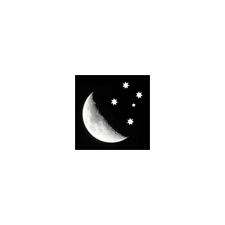
SkyView2
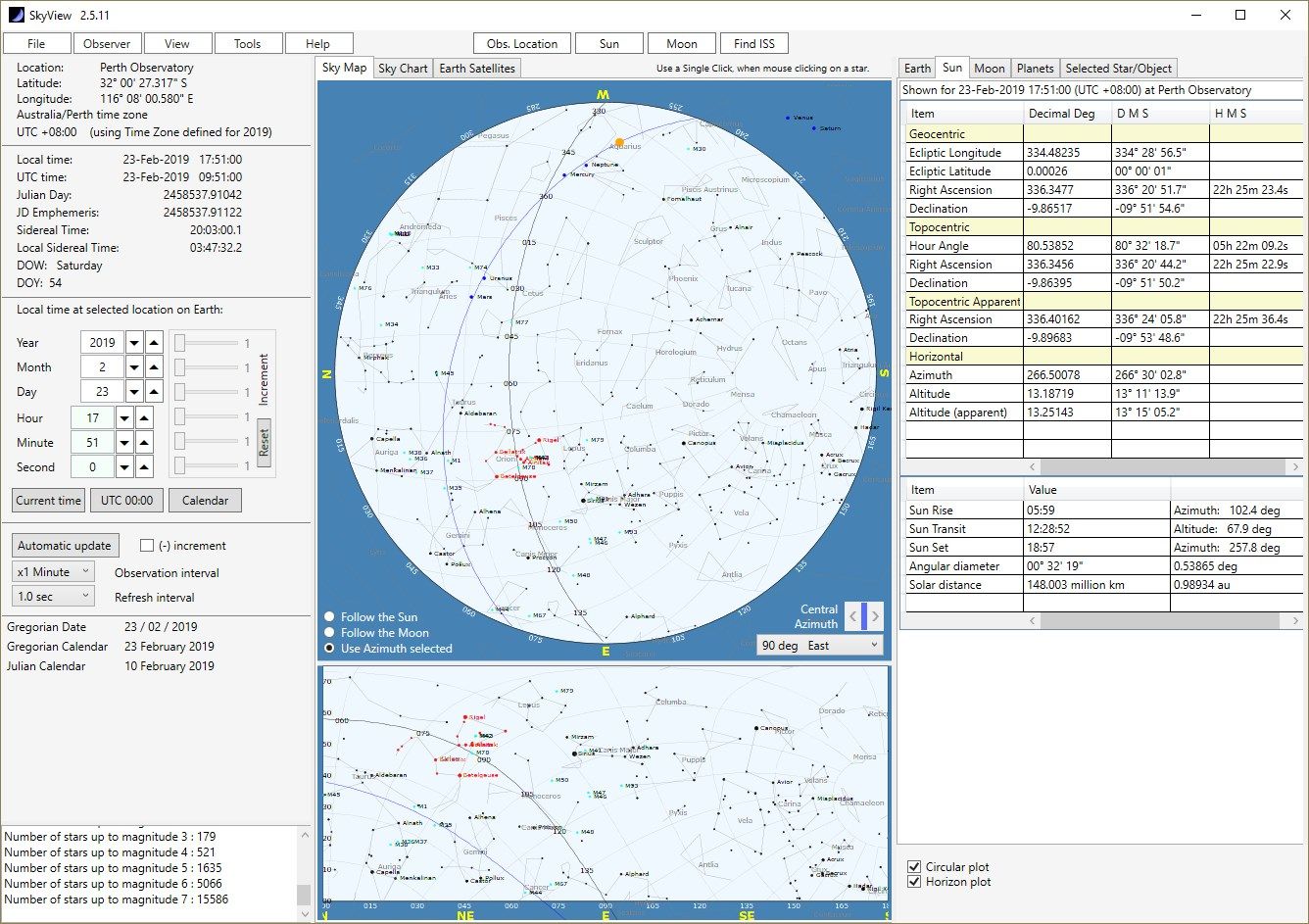
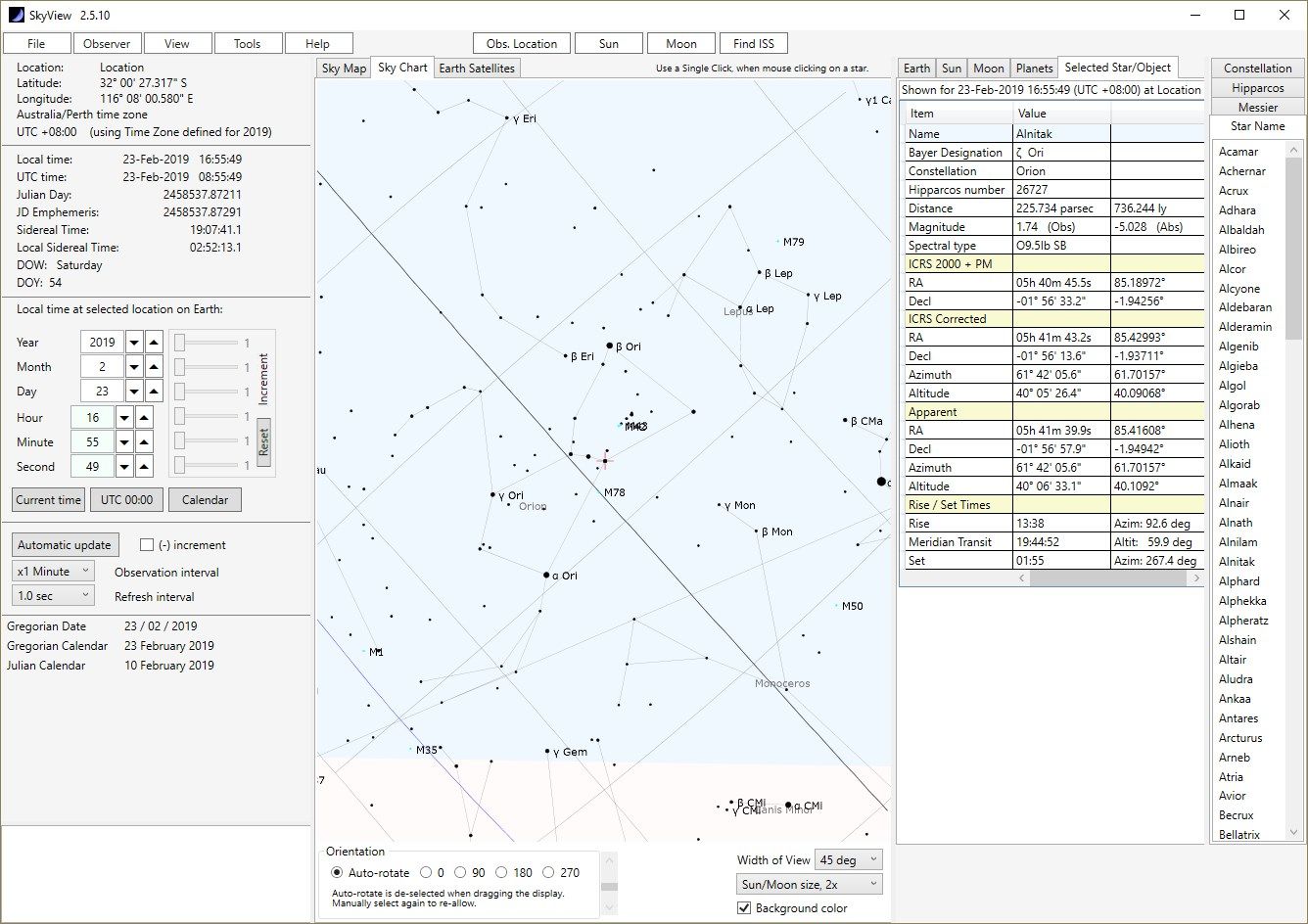
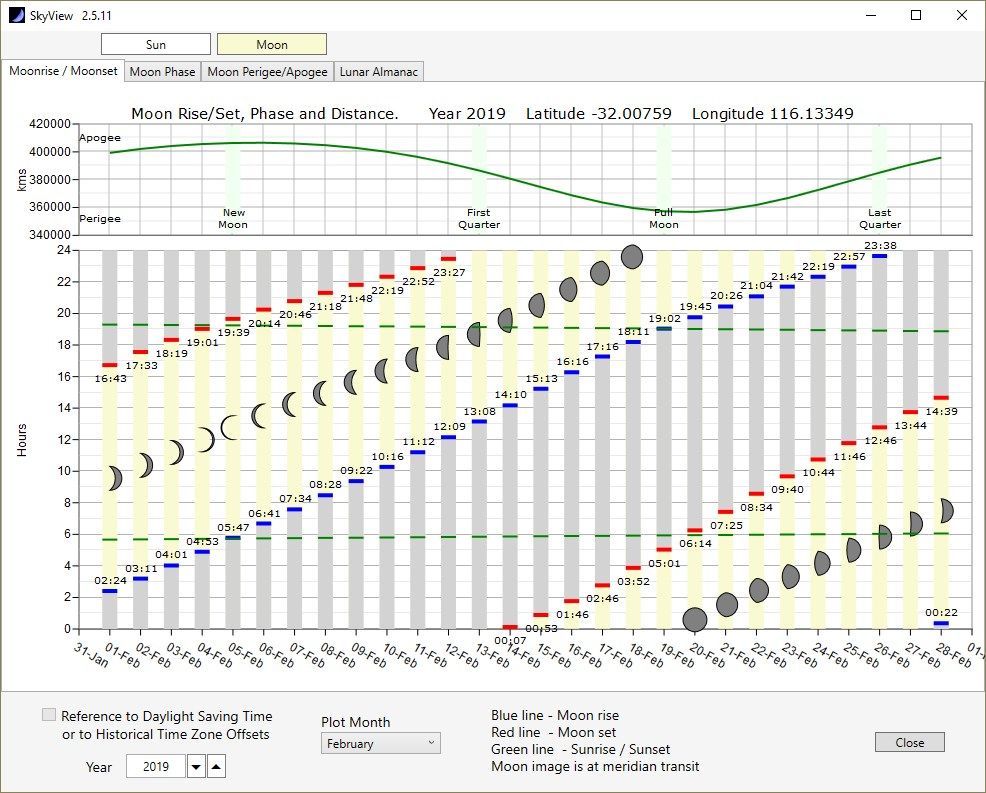
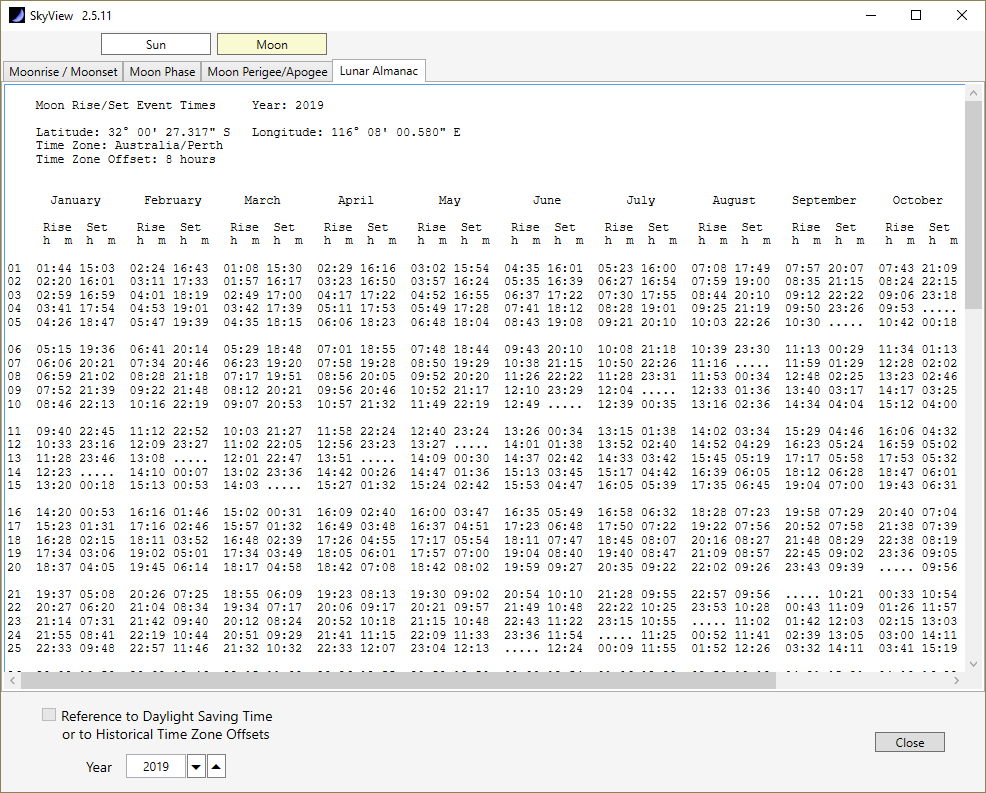
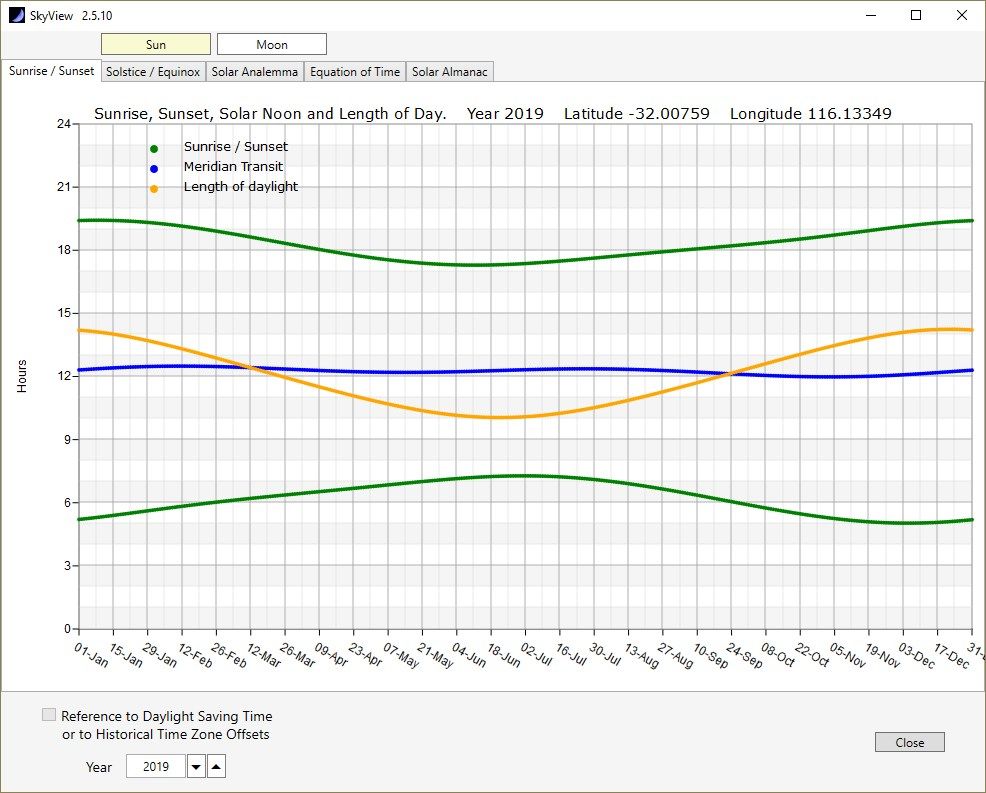
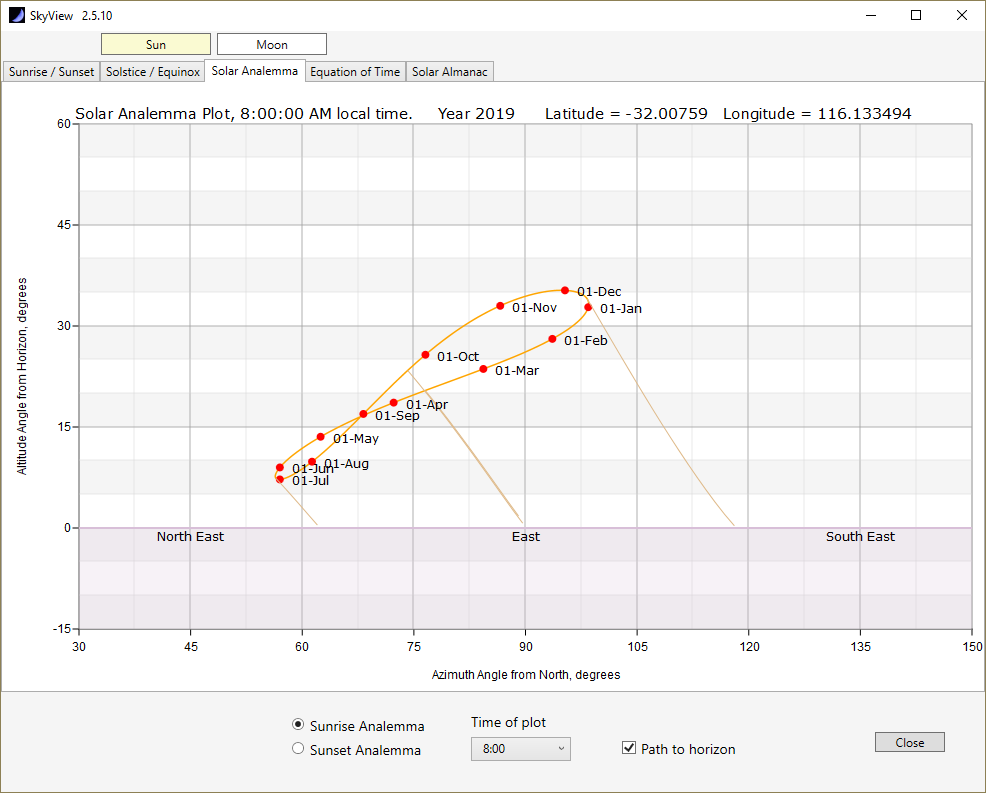
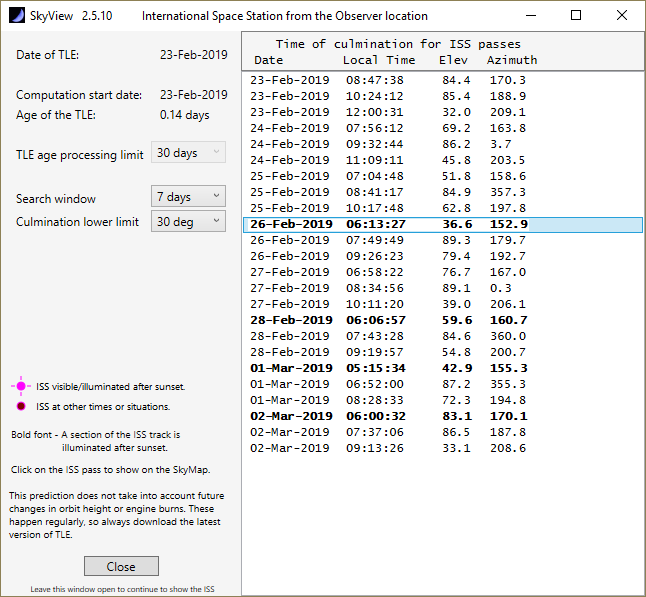
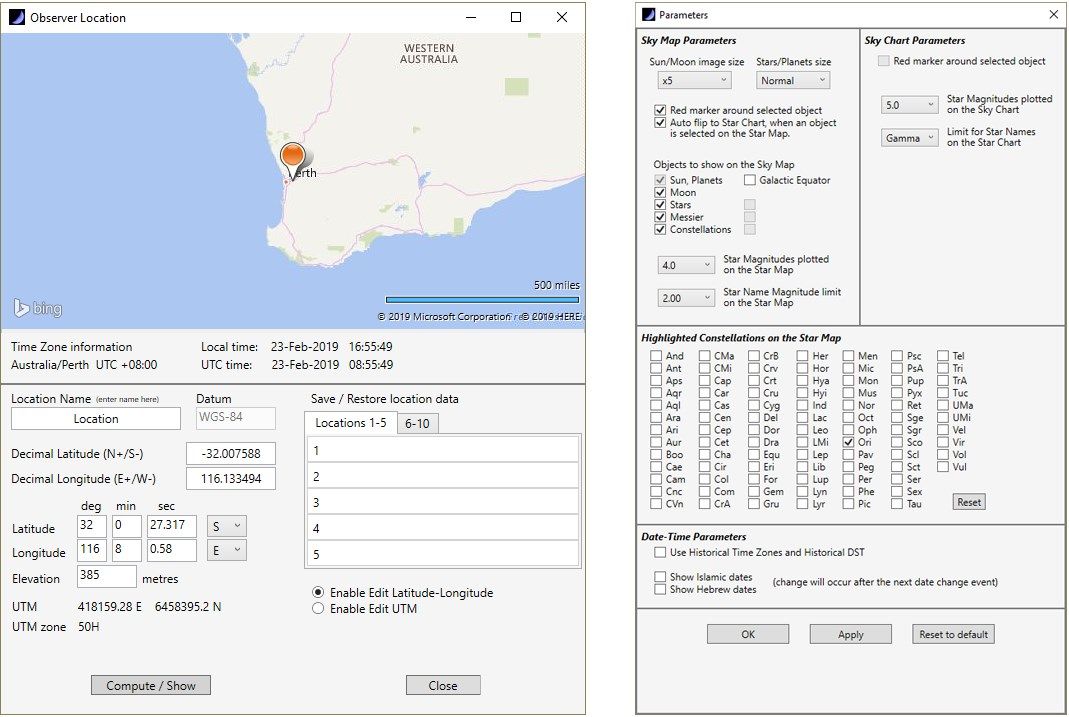
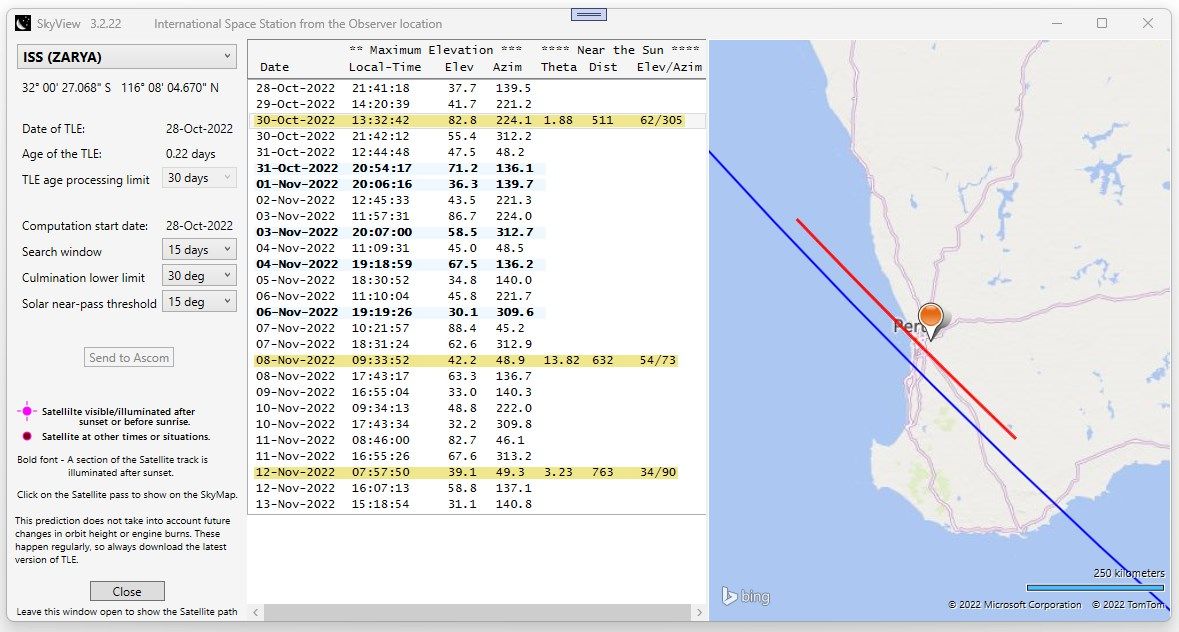
App details
About SkyView2
SkyView2 is used for determining the positions of the sun, moon, planets, stars, ISS and other astronomical bodies in the sky from an observer’s location. It is designed to allow the observing parameters, such as date, time and observer location be easily changed so that changes in an objects position in the sky can be studied.
A map of the entire sky is given showing the stars, planets and other bodies that are currently above the horizon and observable. A zoomed-in star chart that is centered on a specific body is also produced, and is independent of whether the body is above the horizon or not.
The computations can be done over a date range from 4713 BCE to 9999 AD.
Other features include:
- Computing the rise and set times of astronomical bodies.
- Predicting the phases of the moon, and the dates of lunar and solar eclipses.
- Computing the date and time of the Solstices and Equinoxes.
- Plots of the Solar Analemma and Equation of Time.
- Almanacs giving the annual rise, set and meridian transit times for the sun and the moon.
- Predicting passes of the International Space Station.
- Showing the sky as it would be observed from the surface of another planet.
- Computing “Mars Time”.
- Plotting the corrections that are required for Obliquity, Nutation and Precession.
- Plotting the corrections that are applied to the RA and Declination of the stars.
- Showing the current location in the sky of the GPS, Glonass and Iridium satellites.
- Converting Latitude and Longitude to UTM and vice versa (WGS-84 only).
- Local times are referenced to daylight saving time when applicable.
- Historical time-zone settings can be applied for any location on Earth.
- Show the date in both the Gregorian and Julian calendars
- Computing the date in the Islamic and Jewish calendars.
This application is free to download, but some of the features listed above require an Extra Features license that is available as an In-App purchase from the Microsoft Store. A 30 day free trial license or a purchasable lifetime license are available.
Key features
-
Maps showing all the observable astronomical bodies in the day and night skies from an observers location.
-
Computing the rise and set times of astronomical bodies.
-
Predicting the phases of the moon, and the dates of lunar and solar eclipses.
-
Computing the date and time of the Solstices and Equinoxes.
-
Plots of the Solar Analemma and Equation of Time.
-
Almanacs giving the annual rise, set and meridian transit times for the sun and the moon.
-
Predicting passes of the International Space Station.
-
Showing the sky as it would be observed from the surface of another planet.
-
Computing "Mars Time".
-
Plotting the corrections that are required for Obliquity, Nutation and Precession.
-
Plotting the corrections that are applied to the RA and Declination of the stars.
-
Showing the current location in the sky of the GPS, Glonass and Iridium satellites.
-
Converting Latitude and Longitude to UTM and vice versa (WGS-84 only).
-
Local times are referenced to daylight saving time when applicable.
-
Historical time-zone settings can be applied for any location on Earth
-
Computing the date in the Islamic and Jewish calendars.
-
Show the date in both the Gregorian and Julian calendars
-
Computing Sun Transits (Solar Transits) of the International Space Station (ISS)